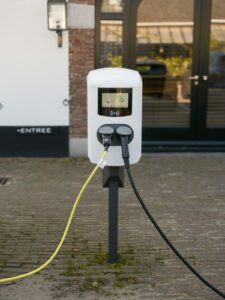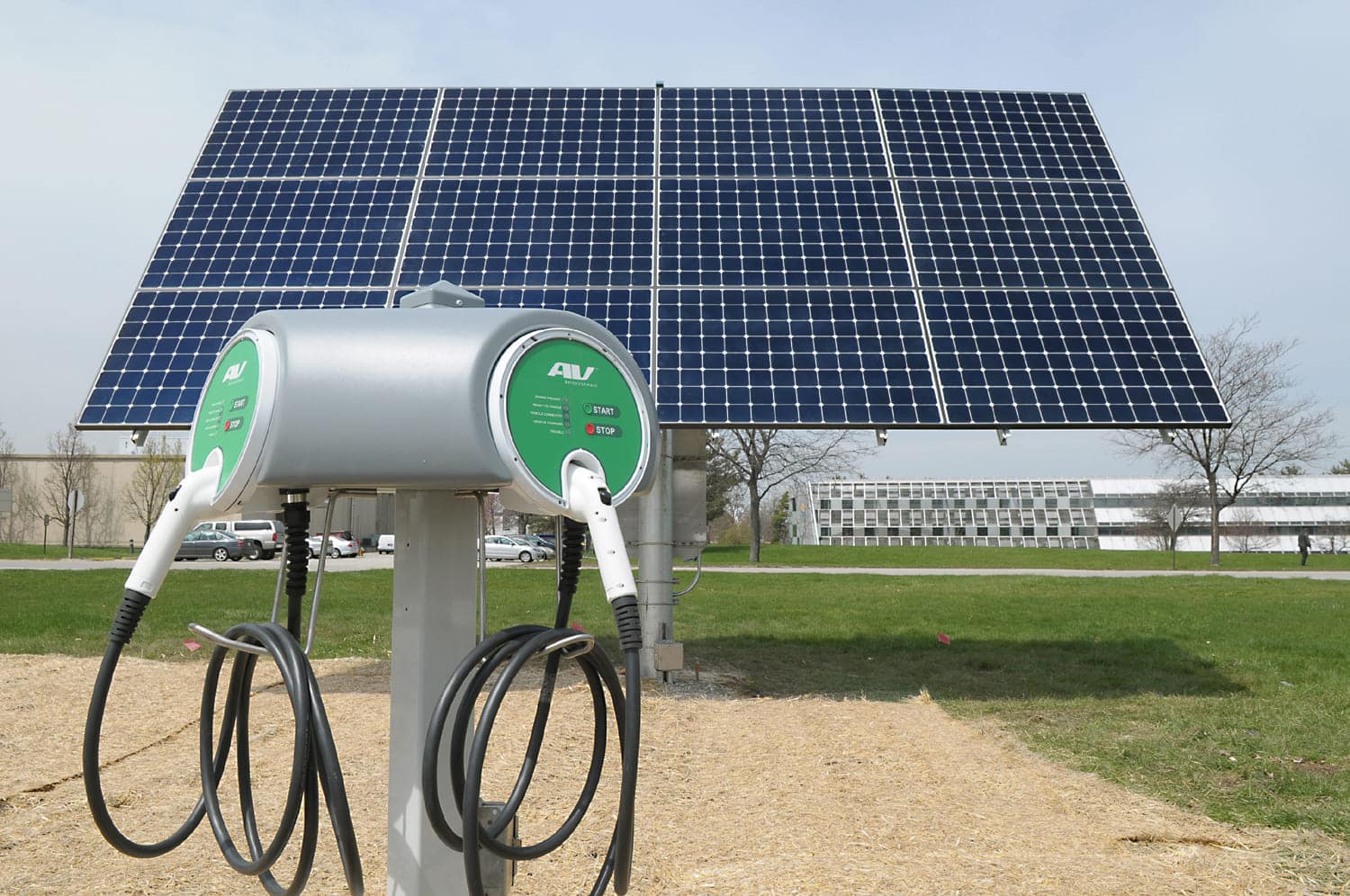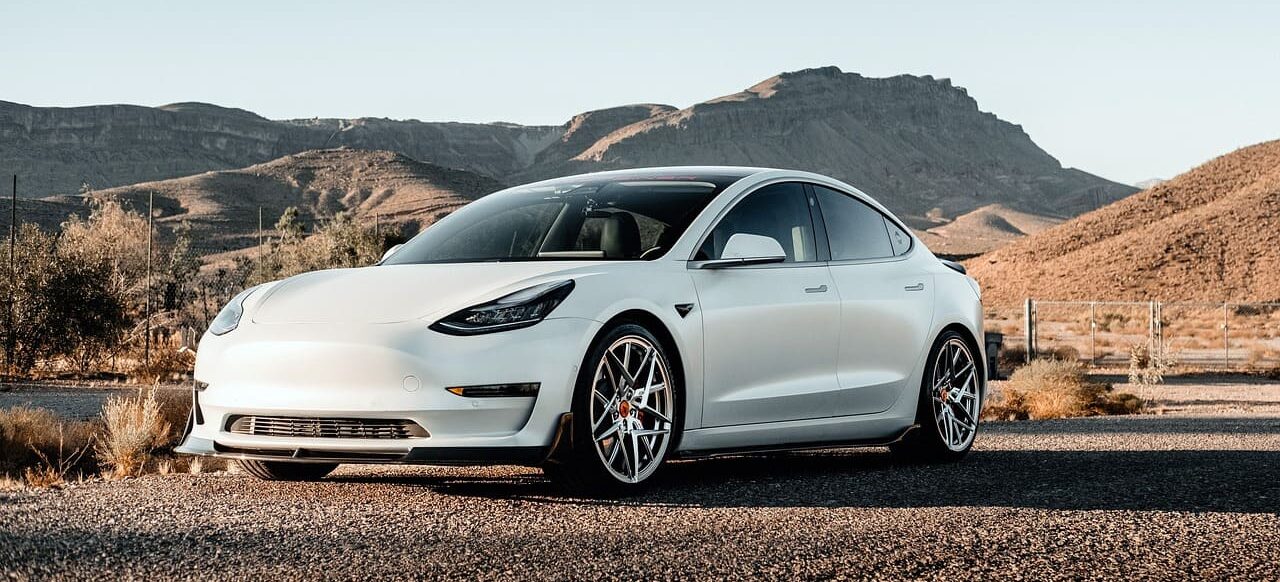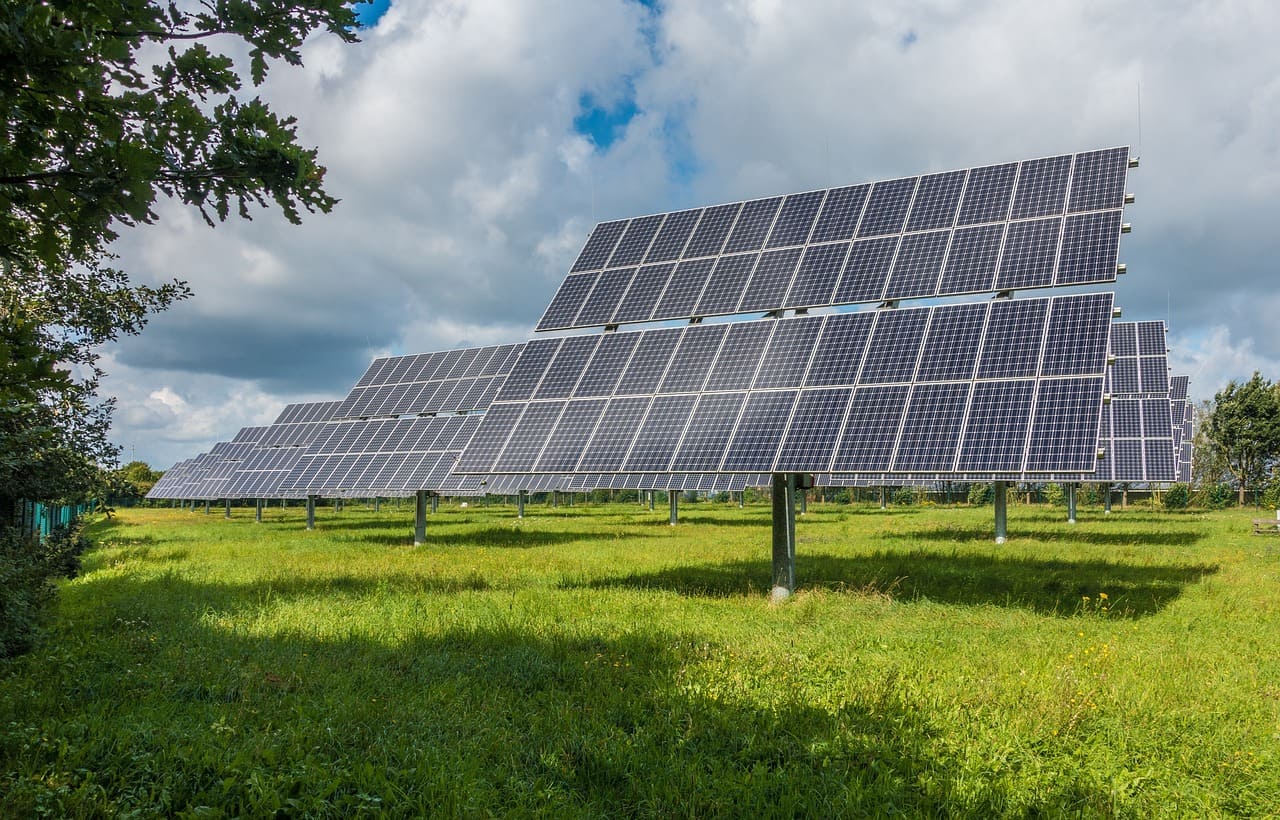
Home / EV Charging News / Can You Charge Your EV with Solar Power?
Electric Vehicles (EVs) are one of the best tools to empower a clean future with e-mobility. These vehicles feature zero tailpipe emissions and produce 64% less Greenhouse Gas (GHG) emissions than ICE vehicles, more impressive is that you can further bring down GHG emissions for your EV by using solar panels to charge an electric car.
Charging an electric car with solar power is a great way to reduce your carbon footprint and to save money on electricity bills. In this article we explain the basics of solar energy, solar chargers, how to use solar panels to charge your vehicle, and more.
The electricity generated in the U.S. has a mix of energy sources combining petroleum, natural gas, coal, nuclear power, and renewables. Considering this, you cannot rely on the power grid to charge your car with solar power.

Figure 1: Electricity Fuel Mix in the U.S.
However, by installing a solar PV array on the top of your roof, you can have control on the energy source and charge your EV directly from solar power. You can charge your electric car during the day when solar production is at its highest point to minimize your carbon footprint.
For those who want to charge their electric vehicle with solar power but need to charge the car at night, you can add a home-energy storage system to the PV array. This will store the generated solar energy throughout the day to charge the vehicle later at night. Alternatively, you can also offset your consumption of the generated solar energy during the day by using the Net Metering program (available in many States) under which all kWh sent to the grid by the solar system will be credited to your electricity bill account.
Solar energy is a renewable energy source that can be obtained by harvesting and converting the electromagnetic radiation that comes from the Sun.
You can consider the Sun as a gigantic fusion reactor floating in the sky and constantly emanating energy to the Earth, this energy can be harvested and converted into electric power by using Photovoltaic (PV) technology, usually coming in the shape and size of solar panels or PV modules.

Figure 2: EV charging with solar energy
Before we step further into explaining why and how to charge a car from solar panels, you should learn what a solar electric car charger is.
Basically, a solar electric car charger is an Electric Vehicle Service Equipment (EVSE) or EV charging station that has been designed to use solar power to charge your vehicle.
This type of equipment differs from standard electric vehicle chargers since it integrates a power inverter capable of tracking solar DC power coming from the panels and convert it into AC to charge the electric vehicle and power the house as well.
There are two different ways to have solar EV charging at home : Install a standard EV charging station and retrofit with solar or using a solar-integrated electric vehicle charger.
One of the most common ways to enable solar charging for an EV car is to install a regular EV charger and retrofit the electrical installation to feed it with power from the existing solar panels. This is a great option if your home is solar-ready or is already operating with solar energy. Here, the PV system generates DC solar power that is converted into AC power by an external inverter that powers the EVSE to charge your vehicle. This means you would have the inverter and the EV charger as separate components.
A solar-integrated electric car charger is a more robust and complex device featuring a built-in solar inverter into the EVSE. This device converts DC solar power generated by the PV modules into AC power for solar charging your EV car. The solar electric vehicle charger integrates two components (inverter and EV charger) into one, which allows you monitor all the energy flows of your house with a single device while also optimizing space and making installations easier.

Figure 3: Peak Sun Hours in the U.S.
Charging an EV with solar panels is relatively easy. You need to install a PV system with the desired generating capacity and connect the system to the separate or integrated installation solar electric car charger. To calculate the size of the system you can use the following equation:

You can use Figure 3 to estimate the PSH in your state or use this website. We also recommend a 0.7 derating factor to make up for PV losses. A good way to estimate the yearly consumption of the EV is to use the expression below.

To calculate the number of modules, you need to divide that PV system size by the power rate of the modules you will use, like in the following equation:

The positive impact you provide to the environment is an important reason for charging a car with solar panels, but the most important one for you is the stable price you will get for electricity for the 25 – 30 years lifespan of the PV system.
Electricity from the grid inflates at a rate that varies yearly from 3% – 6% or a little more, but in years like 2022 it can grow as much as 14.3%, this is caused by regular electricity heavily relying on fossil fuels that feature volatile prices. With solar power, you get a steady price for as long as your system is operating, paying that electricity in advance when you buy the system.

Figure 4: Tesla Model 3
The best way to illustrate the difference between charging an electric car at home with solar panels and without them is by comparing the cost of electricity from the grid ($/kWh) and the Levelized Cost of Energy (LCOE) for a residential PV system, also measured in dollars per kilowatt hour ($/kWh).
For our calculation, let us consider a simple 3kW PV system that after PV losses considering a derating factor of 0.7 would generate around 10 kWh per day at 5 PSH on average. If we consider the cost per watt installed at $4, the whole system would cost $12,000 and generate at least 91,250 kWh in a lifespan of 25 years. This means that the LCOE for this PV system would sit at nearly $0.098.
If we consider charging once per week an EV like the Tesla Model 3 with its 60 kWh battery, it would cost $10.5 per charge at a grid electricity cost of 17.5 cents per kWh. Considering the cost of solar generation at $0.098/kWh, it would have an equivalent cost of $5.88 to charge it. This means that charging the EV for a whole year costs $504 with electricity from the grid and $282.24 if charged with solar power.
As you can see, charging an EV from solar panels is cheaper than electricity from the grid, and this is not even considering the growing inflation considering the volatile prices of fossil fuels. Assuming a steady electricity price inflation of 6% per year, in five years you could be paying $655.2 per year to charge your EV while charging with solar power would still cost you $282.24.
To properly use solar power for EV charging, you should be able to choose the right EVSE. In this section, we introduce important aspects to consider to choose the right charger.

Figure 5: PV power plant
Solar power is one of the main renewable energy alternatives used to promote the clean energy transition. The U.S. is positively pushing to reduce Greenhouse Gas (GHG) emissions, but this is a worldwide mission, which is why locations around the world like Iceland, Costa Rica, and other places are aiming to reach carbon neutrality in the following years.
A home and an electric car charged by solar panels will not only positively help the environment and reduce your carbon footprint, but it is also a great way to save you money. You can prove this by using a solar calculator. No matter how much power you consume, betting on solar power will save you money and help you positively impact the environment.
$2,890.00 Original price was: $2,890.00.$2,790.00Current price is: $2,790.00.
$3,950.00 Original price was: $3,950.00.$3,450.00Current price is: $3,450.00.
$1,650.00 Original price was: $1,650.00.$1,590.00Current price is: $1,590.00.
$2,290.00 Original price was: $2,290.00.$2,150.00Current price is: $2,150.00.
$1,290.00 Original price was: $1,290.00.$799.00Current price is: $799.00.

Your Power Management Partner for Over 25 Years Future Generations Depend on Our Decisions Today ™
2024 © All rights reserved by CyberSwitching